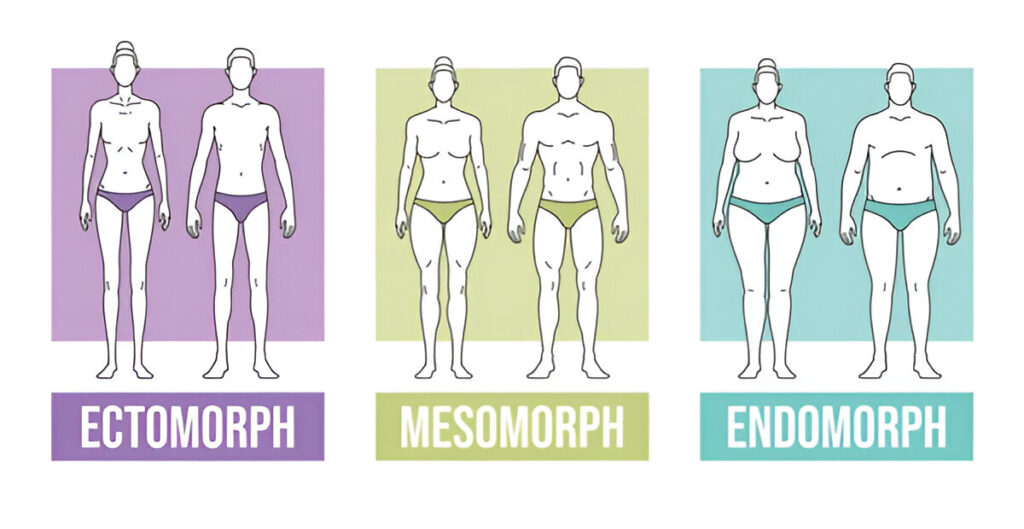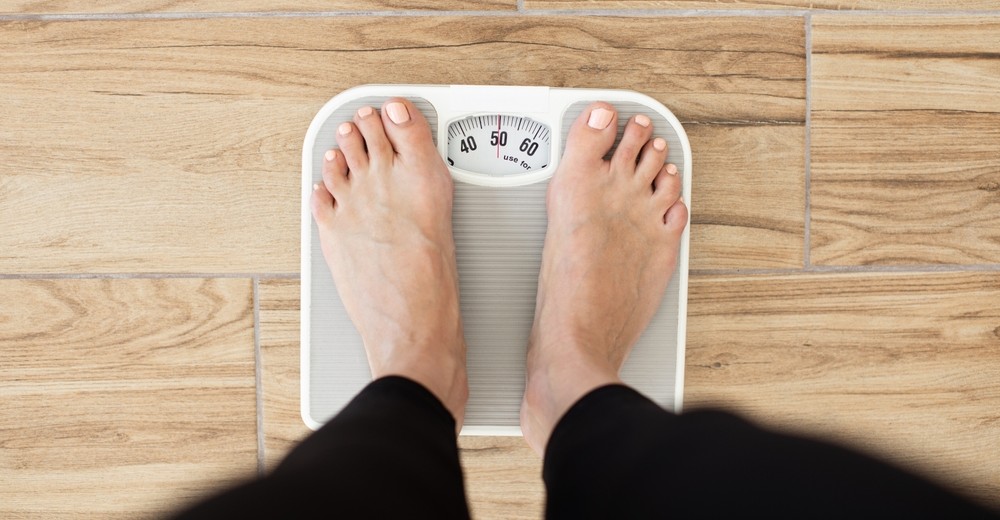If you have an endomorph body type, characterized by a rounder shape, higher body fat, and a slower metabolism, losing weight can feel challenging. However, with the right approach, endomorph weight loss is not only possible but also sustainable. This guide explores tailored diet, exercise, and lifestyle strategies to help endomorphs shed pounds, boost metabolism, and achieve their fitness goals.
What Is an Endomorph Body Type?
The endomorph body type, one of three somatotypes (alongside ectomorph and mesomorph), is typically marked by:
- A softer, rounder physique with wider hips or shoulders.
- Higher body fat percentage and a tendency to store fat easily.
- Slower metabolism, making weight loss more difficult.
- Strong, sturdy bones and a muscular build when trained.
Endomorphs often gain weight quickly but can build muscle effectively with the right plan. Understanding your body type is the first step to designing an effective endomorph weight loss strategy.
Why Is Endomorph Weight Loss Challenging?
Endomorphs face unique hurdles due to their genetic predisposition:
- Slower Metabolism: Burns fewer calories at rest compared to other body types.
- Insulin Sensitivity: May store carbs as fat more readily, leading to weight gain.
- Appetite Regulation: Higher fat storage can disrupt hunger hormones, increasing cravings.
Despite these challenges, research shows that targeted diet and exercise can lead to significant endomorph weight loss, with studies like one in Obesity reporting 5–10% body weight reduction in 6–12 months with lifestyle changes.
Best Strategies for Endomorph Weight Loss
Here are science-backed strategies tailored for endomorph weight loss, focusing on diet, exercise, and lifestyle.
1. Calorie-Controlled, Low-Carb Diet
- How It Works: Endomorphs benefit from a moderate calorie deficit (500–750 calories below maintenance) with reduced carbs to improve insulin sensitivity and minimize fat storage. Focus on protein, healthy fats, and fiber-rich vegetables.
- Example Foods: Lean meats, tofu, eggs, avocado, nuts, leafy greens, berries.
- Benefits: A Journal of Nutrition study found low-carb diets led to greater fat loss in insulin-resistant individuals, common among endomorphs.
- Tip: Use a food tracking app like MyFitnessPal to monitor intake (aim for 1,500–2,000 calories daily, depending on size/activity).
2. High-Protein Intake
- How It Works: Protein preserves muscle mass, boosts metabolism via thermogenesis (burning calories to digest food), and increases satiety. Aim for 1.6–2.2 grams of protein per kg of body weight daily.
- Example Foods: Chicken breast, lentils, Greek yogurt, protein shakes.
- Benefits: A American Journal of Clinical Nutrition study showed high-protein diets increased fat loss by 3–5% compared to standard diets.
- Tip: Include protein in every meal (e.g., 20–30 grams per serving).
3. Strength Training
- How It Works: Lifting weights builds muscle, which increases resting metabolic rate (RMR), helping endomorphs burn more calories even at rest. Aim for 3–4 sessions weekly, targeting all major muscle groups.
- Benefits: A Medicine & Science in Sports & Exercise study found strength training boosted RMR by 7–10%, aiding weight loss.
- Example Routine: Squats, deadlifts, bench presses, and rows with moderate weights (8–12 reps).
- Tip: Work with a trainer to ensure proper form and progression.
4. High-Intensity Interval Training (HIIT)
- How It Works: HIIT alternates short bursts of intense exercise (e.g., sprints) with rest, burning significant calories and improving fat oxidation. Aim for 2–3 sessions weekly (20–30 minutes).
- Benefits: A Journal of Obesity study showed HIIT led to 28.5% greater fat loss than steady-state cardio over 12 weeks.
- Example: 30 seconds sprint, 60 seconds walk, repeat for 20 minutes.
- Tip: Combine with strength training for optimal results.
5. Behavioral and Lifestyle Changes
- How It Works: Address habits like emotional eating or poor sleep, which can sabotage endomorph weight loss. Practice mindful eating, prioritize 7–9 hours of sleep, and manage stress with yoga or meditation.
- Benefits: A Sleep journal study linked poor sleep to 55% slower weight loss, while mindfulness reduced binge eating in trials.
- Tip: Keep a journal to track food, mood, and sleep patterns.
Benefits of Endomorph Weight Loss Strategies
Tailored endomorph weight loss plans offer several advantages:
- Sustainable Fat Loss: Gradual loss of 1–2 pounds per week prevents muscle loss and rebound weight gain.
- Improved Metabolism: Muscle gain and carb control boost calorie burning.
- Better Health: Reduces risks of diabetes, heart disease, and joint issues common in endomorphs.
- Enhanced Confidence: Achieving goals improves mental and physical well-being.
Challenges of Endomorph Weight Loss
Despite their effectiveness, these strategies have potential hurdles:
- Slower Progress: Endomorphs may lose weight more slowly than other body types, requiring patience.
- Cravings: Lower carbs can trigger hunger initially; high protein and fiber help.
- Time Commitment: Exercise and meal prep demand consistency and planning.
- Plateaus: Weight loss may stall, necessitating adjustments (e.g., calorie cycling or new workouts).
Real User Experiences with Endomorph Weight Loss
Feedback from endomorphs on fitness forums and social media highlights successes and struggles:
- Positive Feedback:
- “Low-carb and weightlifting worked wonders. Lost 10 pounds in 3 months and feel stronger!” – Jenna, 34.
- “HIIT plus protein shakes helped me drop 8 pounds. My metabolism feels faster.” – Alex, 29.
- Negative Feedback:
- “Plateaus are tough. Had to cut carbs further to keep losing after 6 weeks.” – Sam, 41.
- “Cravings were intense at first, but adding more veggies helped.” – Maria, 36.
Users emphasize persistence, tracking, and professional guidance (e.g., trainers, dietitians) as key to success.
Sample Endomorph Weight Loss Plan (1 Day)
Here’s a sample one-day plan for endomorph weight loss (1,600–1,800 calories, adjustable):
- Breakfast: 2 scrambled eggs, 1 cup spinach, ¼ avocado, 1 slice whole-grain toast (350 calories).
- Snack: 1 scoop protein shake with water, 10 almonds (200 calories).
- Lunch: Grilled chicken breast (5 oz), 1 cup roasted zucchini, ½ cup quinoa (450 calories).
- Snack: 1 cup Greek yogurt, ½ cup berries (150 calories).
- Dinner: Baked salmon (4 oz), 1 cup steamed broccoli, 1 tbsp olive oil drizzle (450 calories).
- Exercise: 45-minute strength training (e.g., squats, lunges, push-ups) or 25-minute HIIT.
- Total Calories: ~1,650
Adjust based on size, activity, and goals. Consult a dietitian for personalization.
Tips for Successful Endomorph Weight Loss
To maximize endomorph weight loss, follow these practical tips:
- Track Everything: Log food, exercise, and weight weekly to monitor progress and adjust as needed.
- Prioritize Protein and Fiber: Aim for 25–30 grams of protein and 25–35 grams of fiber daily to stay full.
- Mix Up Workouts: Alternate strength and HIIT to prevent plateaus and keep workouts engaging.
- Stay Hydrated: Drink 8–10 cups of water daily to support metabolism and reduce bloating.
- Get Support: Join fitness groups, hire a coach, or use apps like Strong or Fitbod for guidance.
- Be Patient: Aim for 5–10% body weight loss over 6–12 months for sustainable results.
Is Endomorph Weight Loss Right for You?
Endomorph weight loss strategies are ideal for:
- Individuals with a rounder build, higher body fat, or slower metabolism.
- Those committed to consistent diet and exercise changes.
- People seeking sustainable fat loss and muscle gain without extreme diets.
They may not suit:
- Those expecting rapid results without long-term effort.
- Individuals with medical conditions requiring specialized diets (consult a doctor).
- People who dislike structured exercise or meal planning.
Alternatives to Endomorph Weight Loss Strategies
If these methods aren’t suitable, consider:
- Intermittent Fasting: Timed eating windows (e.g., 16:8) reduce calories without strict carb limits.
- Keto Diet: High-fat, very low-carb plan accelerates fat loss but may be restrictive.
- Mediterranean Diet: Balanced approach with less focus on low carbs, still effective for endomorphs.
- Professional Programs: Medically supervised plans (e.g., Weight Watchers, Noom) offer structure.
Final Thoughts on Endomorph Weight Loss
Endomorph weight loss requires a tailored approach, combining a low-carb, high-protein diet, strength training, HIIT, and lifestyle changes to overcome a slower metabolism. While challenges like plateaus or cravings may arise, consistency and patience can yield 5–10% body weight loss, improving health and confidence. By tracking progress, seeking support, and adjusting as needed, endomorphs can achieve lasting results.
Consult a healthcare provider or dietitian before starting any plan. Have you tried endomorph weight loss strategies? Share your tips or experiences in the comments below!



